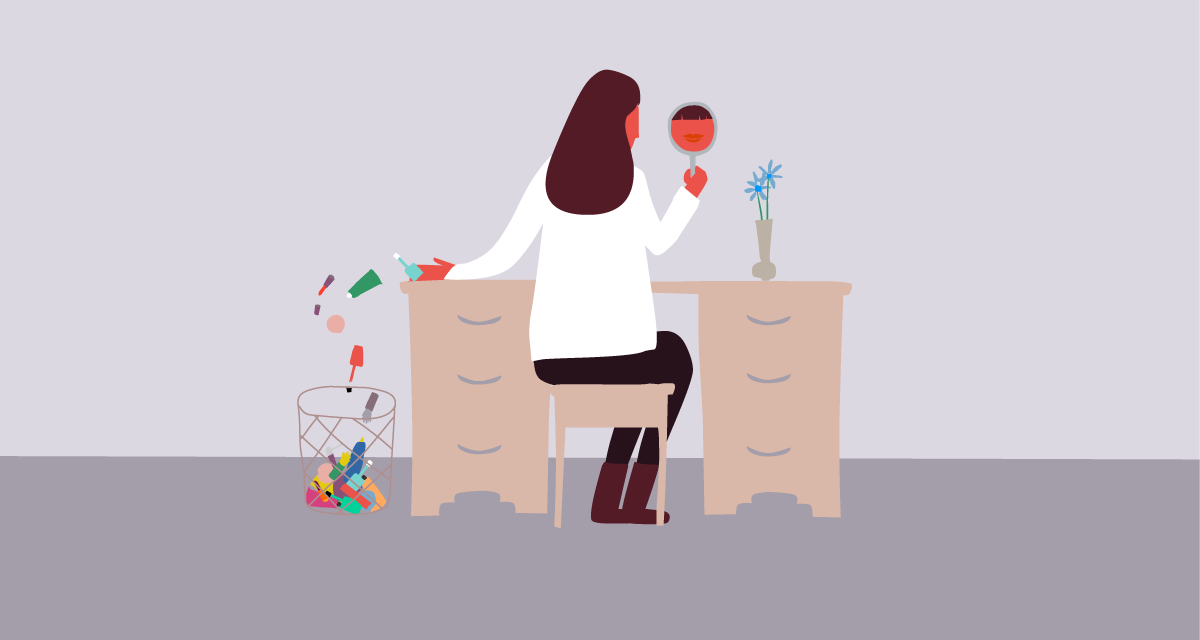Do not use cosmetics, nail polish, toothpaste, shampoo etc. containing parabens or phthalates. Avoid using artificial air fresheners.

Parabens and phthalates are commonly used chemicals in cosmetics and perfumes that mimic the hormone estrogen and increase breast cancer risk.
Parabens are Preservatives that Mimic Estrogen
Identified as endocrine disrupting compounds, parabens have been found in the urine and breast tissue samples of almost everyone tested. These chemicals are often used as preservatives in cosmetics and such personal care products as deodorants, shampoos, conditioners, toothpaste, sun tan lotion, hair styling gels, shaving gels, and lotions. Common names for this class of chemicals include butyl paraben, ethyl paraben, methyl paraben, and propyl paraben.
Parabens are absorbed through the skin and in the gastrointestinal tract from foods. Measurable amounts of 6 different parabens have been identified in breast cancer tumours. The parabens found in tumours are the same ones used in manufacturing cosmetics. They mimic the hormone estrogen and can stimulate growth of breast cancer cells at concentrations now found in the breast. Higher amounts of n-propylparaben are found in the part of the breast closest to the underarm area, where most breast cancer tumours are found. Long-term exposure (>20 weeks) to parabens leads to increased invasiveness of breast cancer cells, which promotes cancer spread.
It is possible now to find cosmetics, shampoos and toothpaste that are paraben-free. Check the labels before buying products. The website http://www.ewg.org/skindeep/ provides a green guide to safe cosmetics.
Phthalates are in Air Fresheners
“Scent” or “fragrance” as an ingredient often signifies the presence of phthalates, which are endocrine disrupting compounds, as well as other irritating chemicals, such as formaldehyde. Even at a very low concentrations, phthalates can mimic estrogen and induce breast cancer.
Opt for fragrance-free products whenever possible. Use pure essential oils such as lavender for perfumes and air-fresheners. Choose beeswax and organic candles, which emit fewer toxins than candles made from paraffin. Select candles with cotton wicks rather than metal core wicks, which often contain lead.
Protective Essential Oils
Make your own Essential Oil Blend for Breast Health. Essential oils may be applied topically or inhaled. When applied topically, essential oils are quickly absorbed into the blood stream. Absorbency may be increased through warmth and friction. The strongest known essential oil to inhibit breast cancer cells is thyme (Thymus vulgaris), which contains carvacrol.[i] [ii] The next strongest oils safe for topical application, in descending order are chamomile (Anthemis nobilis), rose (Rose centifolia), cinnamon, jasmine (Jasminum grandiflora), lemon and curry leaf oil. See more here.
References:
Concentrations of parabens in human breast tumours.
Lower concentrations of phthalates induce proliferation in human breast cancer cells.
Take the Breast Health Challenge!
Find chemical free cosmetics or don’t use them at all and take a photo or make a video of you doing it, and post on your Facebook page, Youtube or Instagram with the hashtag #breasthealthchallenge between Oct 1-31.
Sign up to receive daily tips in October: Sign Up
Tell us about your chemical-free cosmetics in the comments section below. Let’s share what works!
Click here to see all tips
Upcoming Programs
For upcoming Healthy Breast Programs see http://mammalive.net/upcoming-courses/



